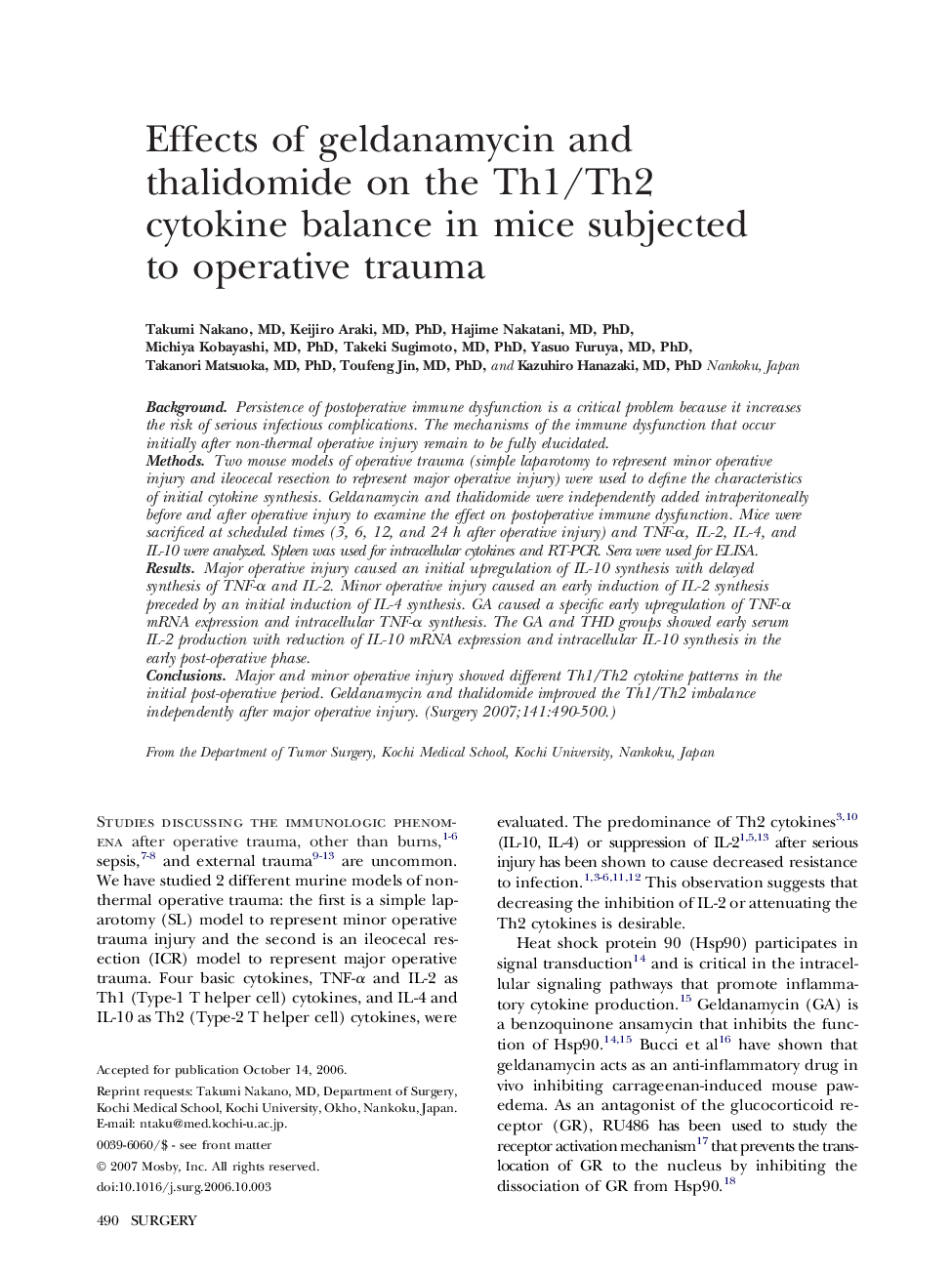| Article ID | Journal | Published Year | Pages | File Type |
|---|---|---|---|---|
| 4310395 | Surgery | 2007 | 11 Pages |
BackgroundPersistence of postoperative immune dysfunction is a critical problem because it increases the risk of serious infectious complications. The mechanisms of the immune dysfunction that occur initially after non-thermal operative injury remain to be fully elucidated.MethodsTwo mouse models of operative trauma (simple laparotomy to represent minor operative injury and ileocecal resection to represent major operative injury) were used to define the characteristics of initial cytokine synthesis. Geldanamycin and thalidomide were independently added intraperitoneally before and after operative injury to examine the effect on postoperative immune dysfunction. Mice were sacrificed at scheduled times (3, 6, 12, and 24 h after operative injury) and TNF-α, IL-2, IL-4, and IL-10 were analyzed. Spleen was used for intracellular cytokines and RT-PCR. Sera were used for ELISA.ResultsMajor operative injury caused an initial upregulation of IL-10 synthesis with delayed synthesis of TNF-α and IL-2. Minor operative injury caused an early induction of IL-2 synthesis preceded by an initial induction of IL-4 synthesis. GA caused a specific early upregulation of TNF-α mRNA expression and intracellular TNF-α synthesis. The GA and THD groups showed early serum IL-2 production with reduction of IL-10 mRNA expression and intracellular IL-10 synthesis in the early post-operative phase.ConclusionsMajor and minor operative injury showed different Th1/Th2 cytokine patterns in the initial post-operative period. Geldanamycin and thalidomide improved the Th1/Th2 imbalance independently after major operative injury.
